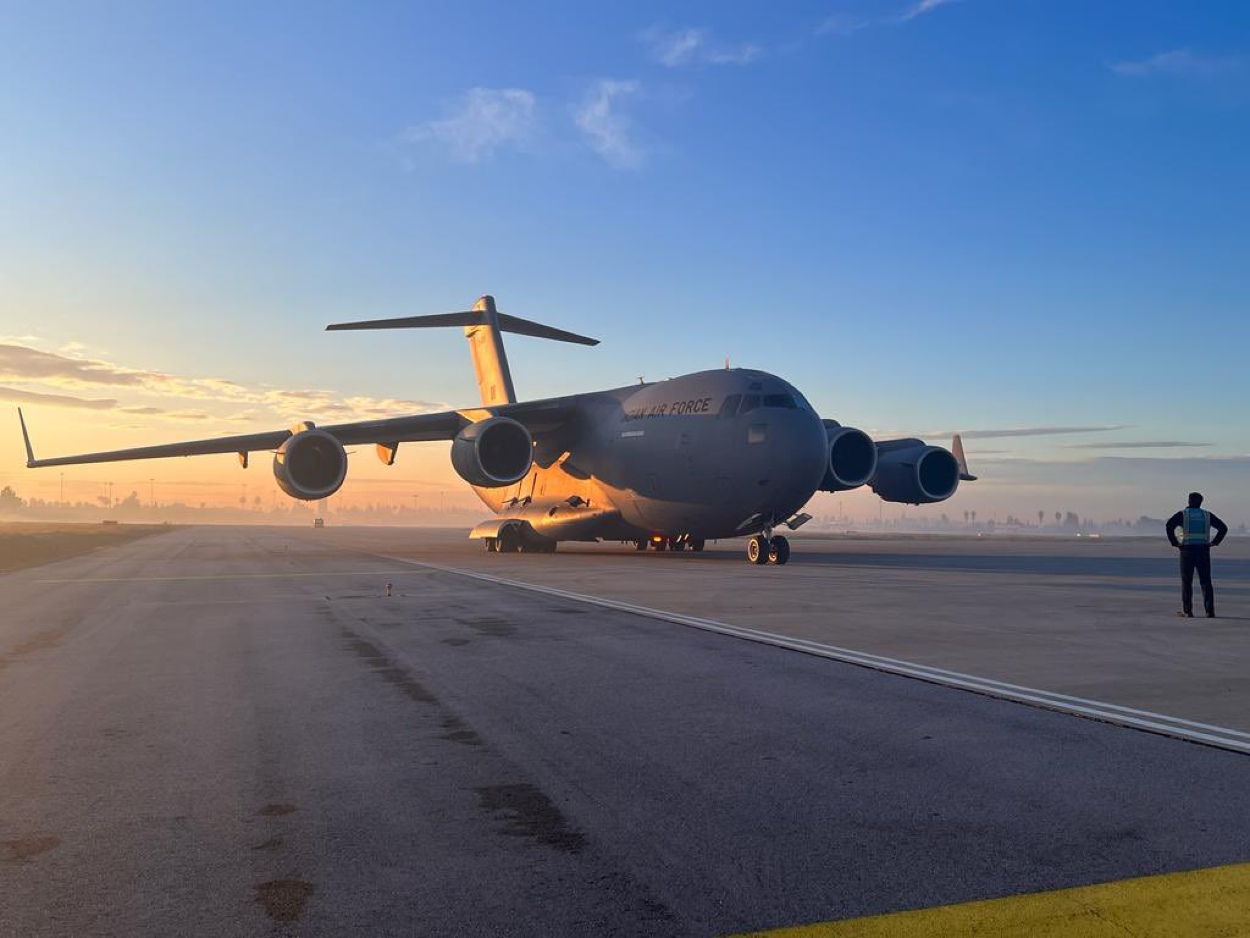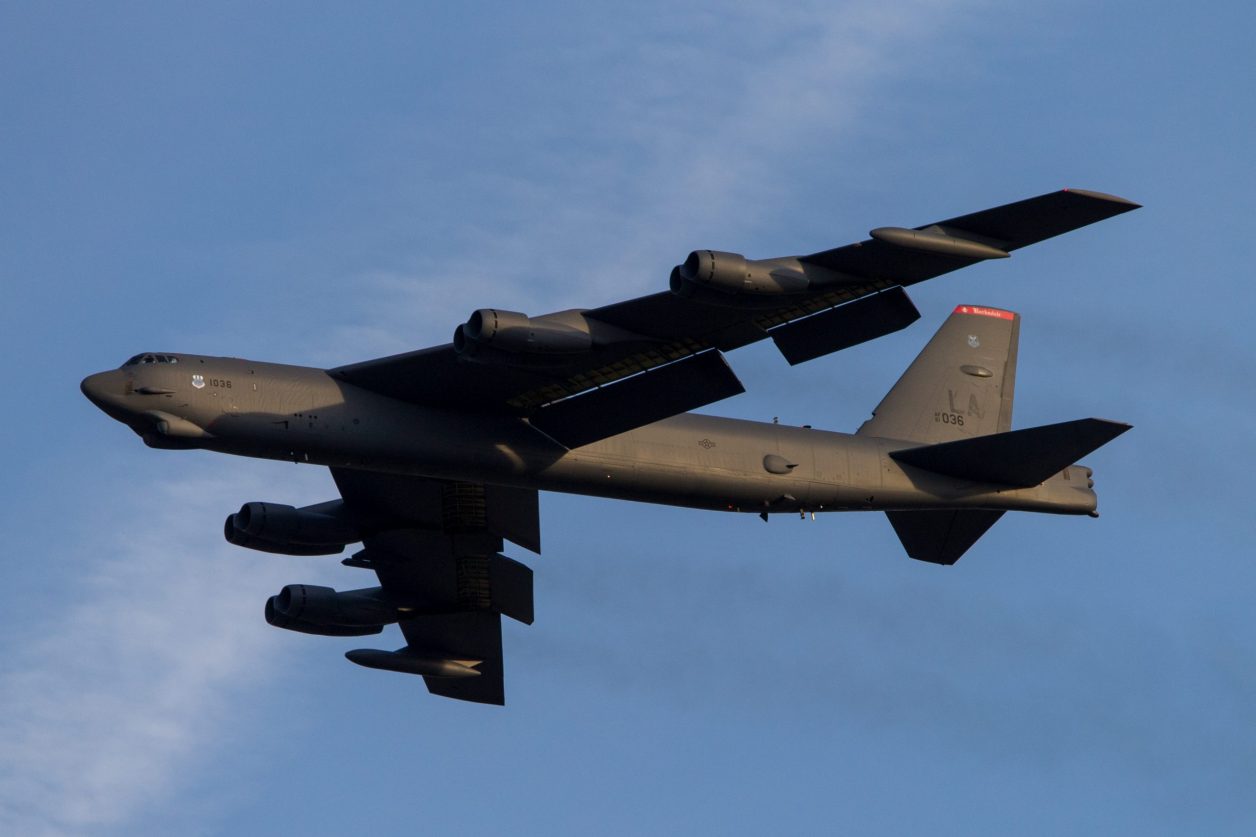Considering the dispersed nature of warfare that the US Air Force (USAF) will experience in the Indo-Pacific against China, the USAF is turning its airlifters, such as the C-17 Globemaster and C-130J, into traditional bombers.
The Indian Air Force (IAF), which operates the Globemaster and C-130J Super Hercules, is expected to monitor this capability closely.
On March 16, the IAF’s C-17 flew 10 hours to Paradrop marine commandos to rescue a hijacked vessel near Yemen. During a standoff with China in 2020 on the Himalayan border, the two airlifters helped India move men and material with alacrity.
The new capability to deploy these cargo aircraft as traditional bombers will help the Indian forces expand the envelope of their long-range missions in the Indian Ocean Region.
The USAF is proceeding with the intent that the prospect of war with a powerful adversary like Russia or China means that its cargo and tanker planes will need to do more than merely logistical support.

The US military is already showing allies how to use their cargo planes similarly. Many US allies don’t have bombers, just like India, but they have these cargo planes and can be leveraged as bombers.
Japan is also exploring the option of using its Kawasaki C-2 tactical transport aircraft to drop stand-off missiles. The plan is to improve Japan’s defenses and ability to conduct counter-strike operations.
Recently, the USAF’s Special Operations Task Group Central and Air Forces Central carried out a training exercise on and off-loading missile cradles from MC-130J and C-17s. C-17s and MC-130Js can operate from a greater range of airfields than bombers, and the capability to deploy long-range missiles will create more challenges for the enemy.
Since early 2020, the USAF has carried out a slew of tests to drop pallets of real or simulated cruise missiles from cargo planes to see if they could deploy and strike a target. The project is known as Rapid Dragon and is overseen by the Air Mobility Command, which oversees the service’s cargo and tanker fleets.
The C-17 has so far deployed a Joint Air-to-Surface Standoff Missile-Extended Range cruise missile, which has a range of about 600 miles. The project goes beyond just giving offensive capabilities to the transport fleet, the aircraft can carry things like sensors and jammers for electronic warfare.
Traditionally, the C-17 Globemaster III and MC-130J Commando II have been deployed to carry out strategic and rapid delivery of fuel and supplies via airdrop. The big aircraft can also transport personnel. The USAF started with these transporters, as turning them into bombers required fewer modifications and training.
At the Air and Space Forces conference in 2023, General Mike Minihan, who leads Air Mobility Command, said: “Imagine not only can we service a target, but we could deploy a decoy, we could put out a jamming sensor, we could put out a sensor that could find a radio and provide search-and-rescue. All those things, I think, are on the table.”
The MC-130J can climb 28,000 feet with a 42,000-pound payload, has a range of 3,000 miles, and can carry as many long-range weapons as a B-52. It can also land and operate from 3,000-foot highways and makeshift landing zones, where a bomber cannot.
In comparison, the C-17 is a behemoth with a payload capacity of nearly 171,000 pounds. It can transport armored vehicles, trucks, trailers, and airdrop more than 100 paratroopers and their accompanying equipment. Given its size, this plane can carry three times as many long-range precision munitions as a B-52 bomber.

The Future Of Globemasters & Super Hercules
The USAF is still figuring out the logistics of this transformation as these airlifters will need to operate from more report and austere airfields to dodge Chinese attacks. The added challenge is these palletized munitions will need to be stored and distributed for them to work effectively.
In the meantime, the program has not escaped the notice of China, which is apprehensive that these US Cargo planes can carry a large number of missiles and would be hard to track as they pick up pre-positioned palletized missiles while on other missions and then launch them from “just outside a defensive perimeter.”
In an article, a researcher at the USAF’s China Aerospace Studies Institute quoted an article that appeared in China National Defense News said: “One can predict that once it is armed with palletized munitions, the agility of the US military’s distributed method for strike missions and the suddenness of those strikes will increase immensely.”
The Rapid Dragon is also seen as “cost-effective,” as using cargo aircraft to drop weapons is cheaper than building more bombers, and militaries without bombers could quickly add the capability to their cargo planes.
- Ritu Sharma has been a journalist for over a decade, writing on defense, foreign affairs, and nuclear technology.
- The author can be reached at ritu.sharma (at) mail.com
- Follow EurAsian Times on Google News




